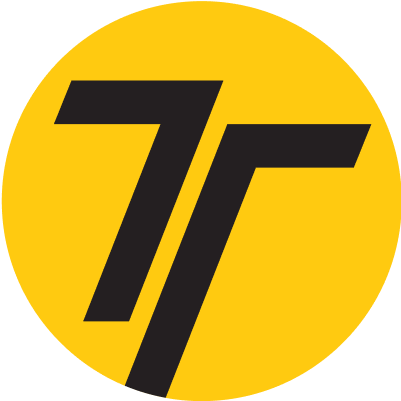
Starting a gym is an exciting venture – one that promises rewarding opportunities, both personally and professionally.
However, before jumping into the world of gym ownership, it’s crucial to understand all of the various costs involved. From securing a location to purchasing equipment, the expenses can add up quickly.
So, how much exactly does it cost to open a gym? The answer depends on the niche, location, and your business goals.
Here are some costs—both upfront and ongoing—to consider before opening and signing a lease on a training facility. These costs will vary depending on the success of the business, so planning accordingly is essential.
Common Gym Startup Costs
#1: Lease or mortgage costs
Renting or buying a commercial location will require a monthly lease or mortgage payment. Before signing a contract, it’s crucial to have a business plan in place.
Check Out: Gym Business Plan: A 10-Step Guide
This will help you to understand how much money is needed each month to cover the commercial lease/mortgage, as well as personal home rent/mortgage and bills.
Additional fees, such as paying a lawyer to review a lease or a real estate agent for securing the location, may also apply.
Key questions to ask before signing:
- How many memberships do you need to sell to break even?
- What strategies will you use to attract and retain members?
- Are there additional fees, such as legal or real estate services, to consider?
#2: Facility setup costs
Transforming a commercial space into a gym can require considerable investment. These are the most common costs you’ll need to consider.
The build out: Is the facility bare? Do renovations need to be done to make it a gym? Does it have plumbing for bathrooms/showers? You will need to address all these upfront costs.
Insurance: You will need comprehensive insurance, including liability coverage for the facility, equipment insurance, and possibly property insurance if you own the building.
Utilities: Heating, air conditioning, water, and WiFi are essential. Depending on the facility and location, heating and air conditioning costs can vary. Trainers need WiFi to connect their devices, and the admin team needs it to update the website and software. This is another monthly cost.
Loan repayments: If you take out a loan to cover startup costs, factor in monthly repayments. The amount will depend on the loan size and interest rates.
Equipment: The cost varies greatly depending on the size and nature of the business. A small private training studio may only need a functional cable machine and a rowing machine, along with dumbbells, barbells, kettlebells, battle ropes, TRX, and medicine balls.
Starting conservatively and buying more equipment over time based on sales is a strategy. If taking out a loan and having more upfront cash, the facility can be equipped in one go. Starting to buy equipment early can help reduce overhead costs when the facility is finally opened. If you find equipment on sale, buying and storing it can be beneficial.
Additional consumables: Items like towels, hand soap, and toilet paper must be purchased monthly or quarterly. Though small, they contribute to the overall cost of opening a gym.
#3: Administrative costs
Payroll: A significant factor in the overall cost of opening a gym. Determine how many trainers and admins will be on staff and figure out the payroll math.
Software: Gym software for scheduling classes, personal training sessions, and processing payments will have a monthly fee. With ABC Trainerize, you get a 30-day free trial before you commit to any plan!
Business license/permits: Operating legally requires various licenses and permits, which usually come with annual fees.
Financial support: Payroll, taxes, and general bookkeeping need to be handled, either by someone hired for the task or personally. This is a monthly cost.
Cleaning and maintenance: Regular maintenance is needed as things break down, laundry needs to be done, and toilets may require repairs.
Check Out: Gym Member Retention Strategies for 2024
#4: Brand Costs
Branding: At minimum, colors, a logo, and a brand identity are necessary to help you stand out from the crowd.
Photography: Professional photos for the website and social media should be invested in once every few years.
Website and domain name: Purchase a domain name and build a website so people can find and learn about the business. Building the website incurs an upfront cost, and an annual hosting fee keeps it online.
Signage: Signage inside and outside the facility to let people know the gym’s location is a one-time cost.
#5: Marketing and advertising costs
Next, we’re ready to start talking about getting clients into the gym. A budget for marketing and a marketing plan are necessary if starting from scratch with no clients.
Consider hiring a marketing consultant, buying ads on social media or in local publications, and possibly hiring a social media manager. Hiring an SEO expert ensures the website appears in searches for gyms or personal trainers in the area, which can be very helpful in bringing in new clients. These will, of course, add to the monthly costs.
Check Out: 16 Proven Gym Marketing Strategies to Get More Members
With an ABC Trainerize Custom Branded App, your gym can shine a spotlight on what makes it unique and build a loyal community of members.
Set Your Gym Up for Success with ABC Trainerize
Understanding what opening a facility really entails and coming up with a business plan to cover all these costs is crucial. Setting up a plan in advance is key—work it out in a spreadsheet first and see where the profits are at.
By powering your gym’s training with ABC Trainerize, you can create new revenue streams by creating on-demand programs, a hybrid training model, and giving your members a place to track their progress.
With fitness, nutrition, and habit-coaching features, plus in-app messaging, progress tracking, and more — it’s everything you need to motivate and inspire.

